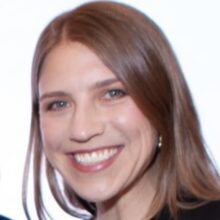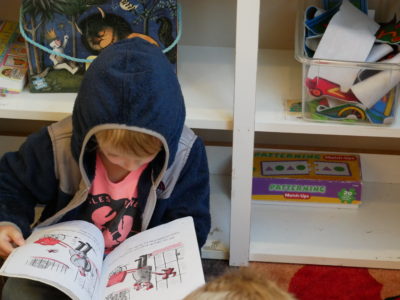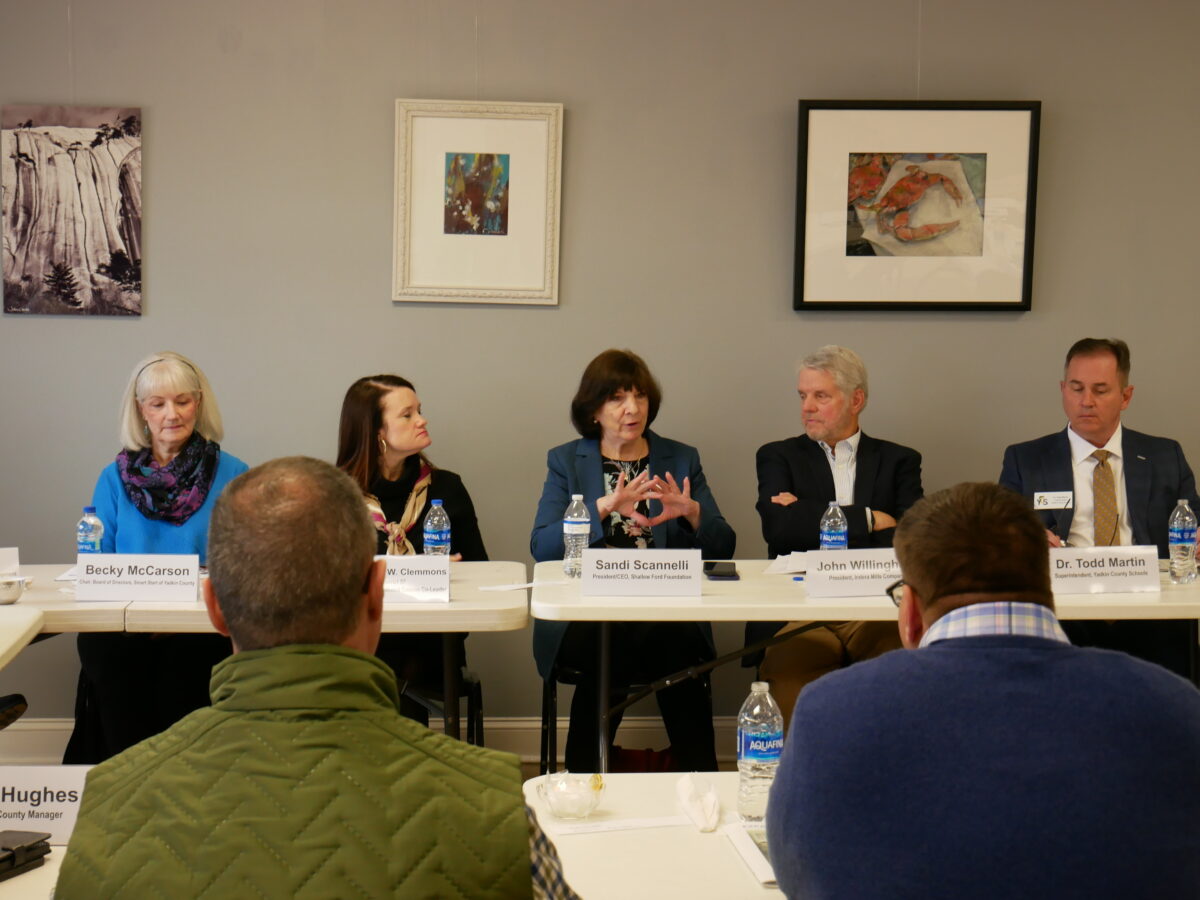
Share this story
- The Child Care Commission is considering a new licensed child care model: a single facility that houses multiple small #childcare programs. #nced
- "I worry that part of our shrinking population is because of that lack of child care," says Bobby Todd, director of the Yadkin Chamber of Commerce, who’s one of the local leaders behind a new #childcare model.
|
|
A new child care model created in Yadkin County could expand child care access — especially in rural areas. But there’s no licensing avenue for the model yet.
The state Child Care Commission approved a petition on Monday for a rule change to create that avenue.
The change would allow for a new type of child care setting that houses multiple small early childhood programs. The model would lower costs for providers and meet rural communities’ needs more than current options, said the cross-sector leaders behind the plan.
“If we do move fast enough, we could be the first in the nation to launch this model, which is very exciting,” said Sandi Scanelli, president and CEO of Shallow Ford Foundation, a community foundation serving Clemmons, Lewisville, Yadkin County, and northern Davidson County. “It’s very innovative.”
The Yadkin County draft plan would include six licensed programs in one facility, each with one provider and about 12 children of multiple ages.
Local leaders in K-12 education, philanthropy, and industry have rallied behind the model as a solution for families and businesses, raising 40% of the funds so far to build the facility. They met with legislators and state officials last week to explain their idea, as well as their disappointment when they found there wasn’t a way to move forward in the current licensing system.
“We hit a wall,” said John Willingham, president of Indera Mills Company. “The question at that point was, ‘Are we going to keep trying?’ And Sandi said, ‘Yes, we’re not giving up on this. This is too important.'”
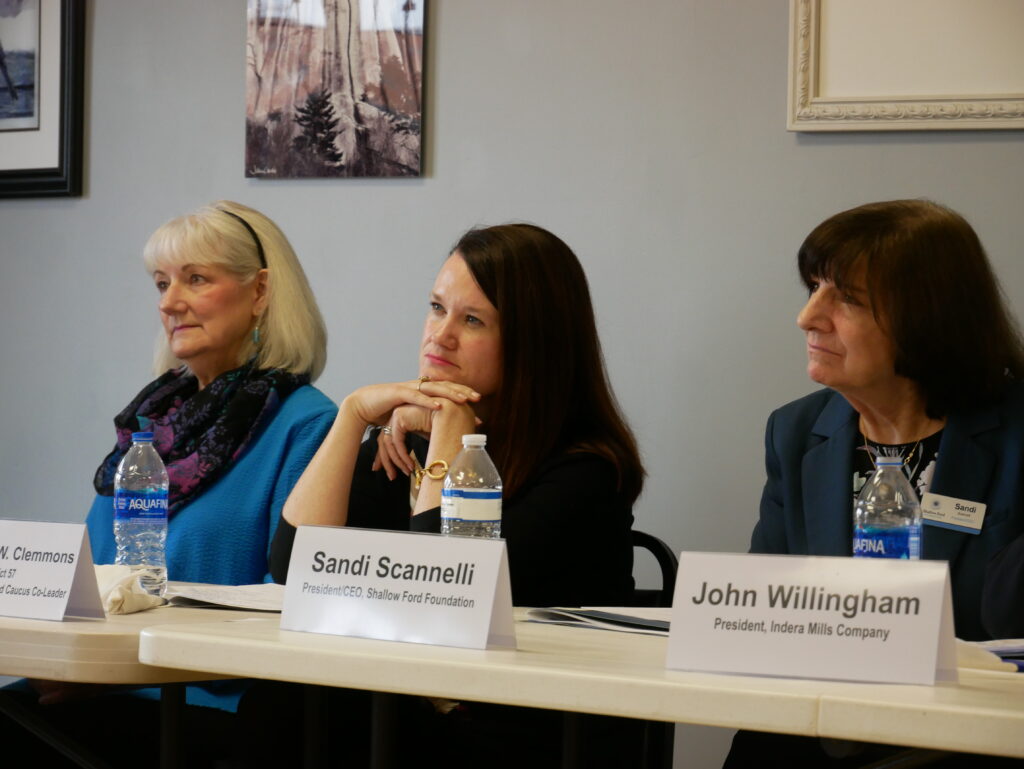
The petition approved Monday starts a rule-making process that could take eighth months or longer, said a spokesperson for the Department of Health and Human Services (DHHS). The department’s Division of Child Development and Early Education has to perform an impact analysis, which the commission must decide whether to publish. If it does, the division then hosts a public hearing and allows 60 days for public comments, before the commission reviews the analysis again. If the commission approves, the Rules Review Commission must then review and approve the rule as well.
If the rule change is successful at all of those points, any facility across the state could pursue this type of licensure, the DHHS spokesperson said.
This kind of change is long overdue, said Louise Stoney, a consultant who studies the finances of child care.
“It’s really time for a new category of care that understands the needs of a small setting,” Stoney said. “It’s time, not just for North Carolina but for the country.”
What’s new about this?
This model, called EarlyEd FlexPlex, would help address the fundamental financial challenge in child care: providers’ inability to make enough to support themselves and stay affordable for parents.
In rural areas, this dynamic is especially true. A Yadkin County study in October 2021 found child care availability was the third-worst in the state, with 19 children per available slot. Programs had waiting lists of more than two years.
“If you were even thinking about having a child, then you needed to put that thought on a waiting list,” Scanelli said.
The new model aims to address these needs by combining aspects of the two current licensing options: child care centers and family child care homes.
Licensed centers are required to adhere to certain teacher-to-child ratios by age. In each classroom, centers must adhere to the ratio for the youngest child in the room. In rural communities, there are often not enough children in one age group to make the finances of a child care center work.
That’s why family child care programs (also called home-based programs) are key to serving rural areas, experts say. Family child care programs are smaller, most of the time with just one provider who is also the owner, and are able to serve mixed-age classrooms.
Removing barriers for providers
Yet the number of family child care homes has declined across the state and country. Yadkin County is no different. Twelve years ago, there were nine child care centers and 11 family child care homes in the area. There are now four private centers and two family child care homes, said Carolyn Choplin, executive director of Smart Start of Yadkin County.
The foundation gave Smart Start some funds to open new family child care homes, but Choplin was unable to find individuals interested in opening a facility within their residence, she said.
The new model would remove some of the barriers to entering the profession by moving the program outside of providers’ residences, allowing providers to share certain parts of the facility, and creating a support network among the six providers. In the third year of the program, providers would make an annual $55,000 and other employees would make $15 an hour, according to estimates from the group.
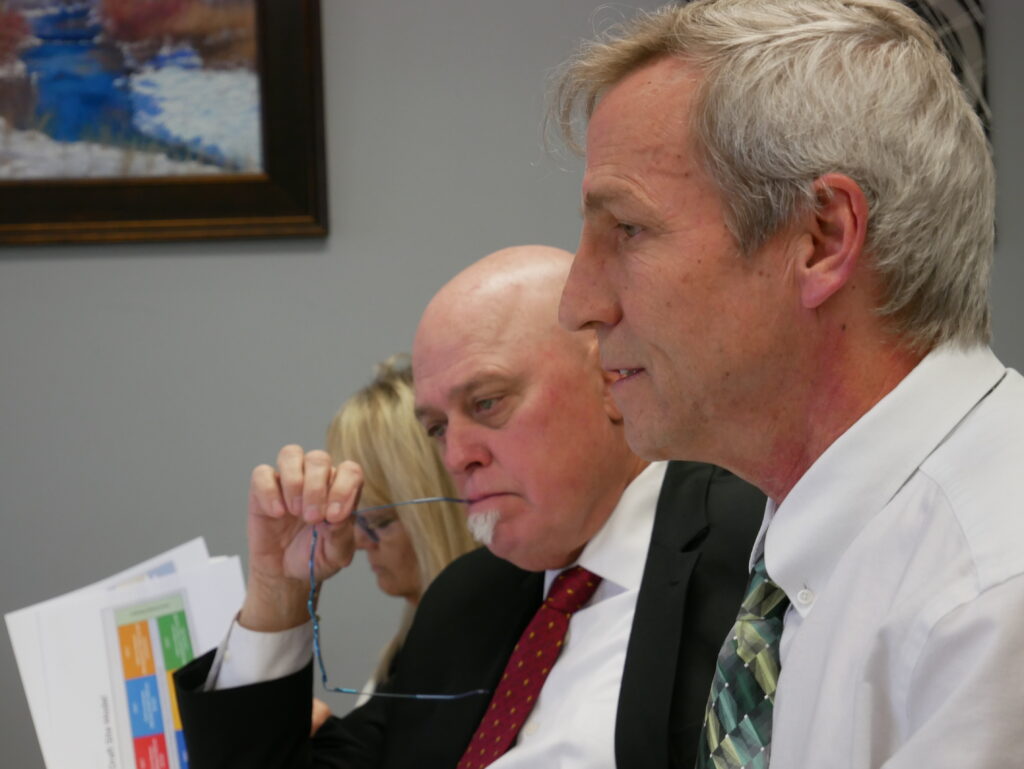
Plus, owning their own business would create more opportunity for individuals, said Kevin Austin, vice president and manufacturing manager at Austin Electronic Enclosures and chair of the Yadkin County Board of Commissioners.
“Part of the problem here this is intended to address is talent development,” Austin said. “Someone can open a center here and not have the staff. Through this entrepreneurial opportunity, the feeling is it’d be a lot easier to recruit people into it.”
It also would keep what works about family child care for rural communities: the small settings and mixed-age classes. The local Smart Start would provide technical assistance to the providers, ensuring they were high-quality.
Employers, legislators behind the effort
Yadkin County Schools Superintendent Todd Martin said the lack of high-quality early learning is evident in K-12 settings.
“We’re seeing more and more students enter as kindergartners who are ill-prepared,” Martin said. “They are not having opportunities to be in social settings with other children and … they come from staying at home and a lot of cases in poverty, and they enter our schools and they’re in a class with 15-16 other kids … They struggle in a lot of ways socially and emotionally.”
Martin said the issue affects him as an employer as well, as teachers leave to have children and don’t return.
He echoed sentiments from several members of the business community during the meeting with legislators. That included Bobby Todd, director of Yadkin Economic Development Partnership and Yadkin Chamber of Commerce.
“What keeps me up at night is knowing that we have manufacturers that have 60, roughly, positions that could be filled if we had child care,” Todd said. “… We have people now who are driving to adjoining counties to get child care. I worry that part of our shrinking population is because of that lack of child care. If we had child care, we may be able to stop the hemorrhaging of our younger folks especially.”
Willingham, whose plant has been in the area since the 1970s, said he’s had to ask himself if the business can stay in Yadkin County without finding child care solutions.
“We have the opportunity right now to solve a tremendous problem and change the dynamics in Yadkin County and the labor force here,” he said.
The legislators at the meeting expressed support for doing whatever it took to move the model forward. Rep. David Willis, R-Union County, said he and early childhood caucus members are looking for sustainable statewide solutions.
“We know there’s going to have to be a multi-layered approach to this,” Willis said. “Families are going to have to be involved, local communities are going to have to be involved, businesses are going to have to get re-engaged and involved. And obviously, we at the state level have to be involved.”
